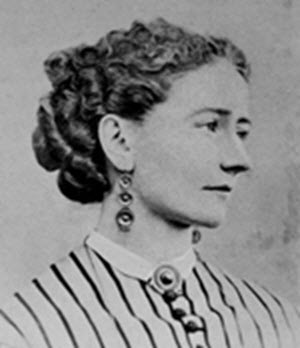Medieval Libraries and Manuscripts
Bookcase in the Medicean Library at Florence.
 In English libraries at least bookcases arranged on what I may term the
Oxford type were in general use throughout the sixteenth and seventeenth
centuries. The invention of printing had largely increased the number of
volumes, and at the same time diminished their value, so that chaining was
no longer necessary. When it had been abandoned neither a desk, nor a seat
in close proximity to the books, was required. In consequence, though
libraries continued to be built on the ancient type with numerous windows
close to the floor, it was possible to alter the old cases, or to make new
ones, with a far larger number of shelves than heretofore; and when
further space for books was needed, low cases were interposed between each
pair of tall ones. A splendid specimen of this treatment is to be seen at
S. John's College, Cambridge, where the bookcases were put up soon after
the completion of the library in 1628.[Pg 50] Though the plinth and central
pilaster have been taken away, and the levels of the shelves changed,
their original appearance can be recovered at a glance. On the top of all
the low cases there was a desk, in memory of that of ancient times. At the
end of the taller cases is a panel to contain the catalogue, here closed
by a small door.
In English libraries at least bookcases arranged on what I may term the
Oxford type were in general use throughout the sixteenth and seventeenth
centuries. The invention of printing had largely increased the number of
volumes, and at the same time diminished their value, so that chaining was
no longer necessary. When it had been abandoned neither a desk, nor a seat
in close proximity to the books, was required. In consequence, though
libraries continued to be built on the ancient type with numerous windows
close to the floor, it was possible to alter the old cases, or to make new
ones, with a far larger number of shelves than heretofore; and when
further space for books was needed, low cases were interposed between each
pair of tall ones. A splendid specimen of this treatment is to be seen at
S. John's College, Cambridge, where the bookcases were put up soon after
the completion of the library in 1628.[Pg 50] Though the plinth and central
pilaster have been taken away, and the levels of the shelves changed,
their original appearance can be recovered at a glance. On the top of all
the low cases there was a desk, in memory of that of ancient times. At the
end of the taller cases is a panel to contain the catalogue, here closed
by a small door.
Bookcases in S. John's College Library.
Sometimes, as we see at Peterhouse, ancient usage asserted itself so far that a seat was contrived by making the plinth of the tall case project to a sufficient distance. These bookcases were set up between 1641 and 1648.
Next: Peterhouse Library





